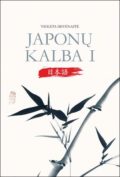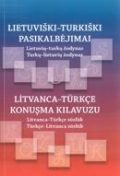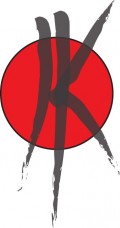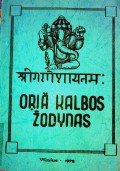
“Japanese I” is the first Lithuanian textbook for Japanese language. The author of the textbook is Violeta Devėnaitė, translator and Japanese language teacher with many years of experience. She teaches Japanese language and literature at Vilnius University, Institute of Asian and Transcultural Studies and conducts research in the Japanese grammar field. Her Japanese language learning tool provides the learner with the knowledge of the JLPT N5 level (equivalent with European A1 level).
Textbook is designed to focus on university/college students – it contains a large number of dialogue-type speaking tasks, interviewer questions and group tasks. Therefore, if you are not studying at university or other Japanese language lessons offering institution, it would be recommended to find a partner for these tasks. Various language learning websites and forums provide this opportunity. Nevertheless, the textbook can easily be used as an independent learning tool. More

Lithuanian – Turkish conversations is a dictionary that helps to learn and understand Turkish language which is not so easy to do. In the beginning of the book we meet the alphabet and the way Turkish characters has to be pronounced. Further on there are many phrases, words, sentences that are divided into various groups like: communication, marketing, services, information for tourists, leisure time, education and thematic groups. Each of these sections is also divided into even smaller sub-sections. This way it is astonishing easy to find word or sentence that has to be used. Also in the beginning of the book there is information about various markings for example: how to mark feminine sex or how to mark synonyms.
In the beginning of the book there is introduction written both Lithuanian and Turkish languages. After reading the introduction it gets very clear why Turkish language should be learned and why it is so useful to know it these days. This book makes learning Turkish language very easy because of its clear explanations, real-life situations translating to both languages resulting fearless traveling to Turkish-speaking countries.

Japanese-Lithuanian electronic dictionary is the first exhaustive dictionary of these two languages meant to be learned for Lithuanians who are studying or frequently use Japanese, as well as Japanese, who are studying Lithuanian. The site is a great and convenient way to expand your vocabulary and to better understand the culture through translating various phrases.
This vocabulary can be used in any place because the site is easy to access either with a computer and tablet or smart phone, as well as any other electronic device which can open up Internet pages, such as smart television. Minimalistic site design helps to easily navigate and to load pages that much faster even if your Internet speed is slow. At the top is the search bar and at the bottom there is „daily proverb“, and, to the right hand corner you can find some trivia. More

Japanese VMU – is a website, for self-study Japanese in Lithuanian. This site is for everyone that wants to learn. These lessons are created from the very beginning. In this website you will learn the basics (reading, writing and listening), get to know the grammar comprehensively, enlarge your vocabulary and come across new things about Japans‘ culture.
Lessons are made by the official JLPT (Japanese Language Proficiency Test) program. By using the material in this website you will be able to achieve JLPT-5 or JLPT-4. All the lessons are divided into 6 parts: introduction, grammar, situation, translation, vocabulary and culture. The grammars are diversified with interactive tasks. More

It is the first and the only one Japanese–Lithuanian dictionary that has been published in Lithuania. The author is doctorDalia Švambarytė. The dictionary includes 3763 Japanese characters.

Oriya (Oria or Odia) language dictionary (1972) compiler Ričardas Mironas (1908 – 1979) was a Lithuanian linguist, devoted philologist, translator and pedagogue. He could speak French very well, taught ancient Greek, Latin languages at the Department of Classical Philology at Vilnius University, also he was the only one who taught Sanskrit for a long time. India and its languages were the love of R. Mironas. He encouraged his students to develop interest in Sanskrit, and later in Hindi, in which he was self-educated.
Oriya, one of the 22 languages officially recognized in India, belongs to the Indo-Aryan branch of the Indo-European language family. It is considered to be a sister language of Bengali and Assamese and is mainly spoken in the state of Orissa. Of all the languages spoken in east India, Oriya is regarded as the one that has been the least influenced by Persian and Arabic. In contrast to Hindi, Oriya has preserved a lot of grammatical characteristics from Sanskrit: three genders, most of the declensions but only has two grammatical numbers. Contemporary Oriya was formed in the middle of 19th century, mostly thanks to Christian missionaries. The language is written in Oriyan script, originated from the Brahmi script family. The direction of writing is from left to right in horizontal lines. More





